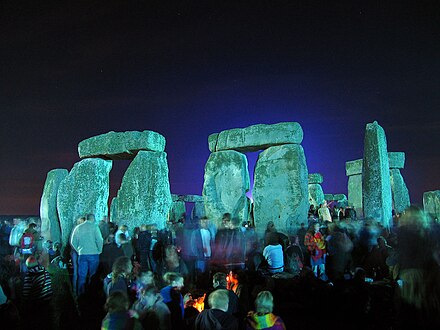Community
A community is a social unit (a group of living things) with commonality such as norms, religion, values, customs, or identity. Communities may share a sense of place situated in a given geographical area (e.g. a country, village, town, or neighbourhood) or in virtual space through communication platforms. Durable relations that extend beyond immediate genealogical ties also define a sense of community, important to their identity, practice, and roles in social institutions such as family, home, work, government, society, or humanity at large.[1] Although communities are usually small relative to personal social ties, "community" may also refer to large group affiliations such as national communities, international communities, and virtual communities.[2]
The English-language word "community" derives from the Old French comuneté (currently "Communauté"), which comes from the Latin communitas "community", "public spirit" (from Latin communis, "common").[3]
Human communities may have intent, belief, resources, preferences, needs, and risks in common, affecting the identity of the participants and their degree of cohesiveness.[4]
Archaeological studies of social communities use the term "community" in two ways, paralleling usage in other areas. The first is an informal definition of community as a place where people used to live. In this sense it is synonymous with the concept of an ancient settlement - whether a hamlet, village, town, or city. The second meaning resembles the usage of the term in other social sciences: a community is a group of people living near one another who interact socially. Social interaction on a small scale can be difficult to identify with archaeological data. Most reconstructions of social communities by archaeologists rely on the principle that social interaction in the past was conditioned by physical distance. Therefore, a small village settlement likely constituted a social community and spatial subdivisions of cities and other large settlements may have formed communities. Archaeologists typically use similarities in material culture—from house types to styles of pottery—to reconstruct communities in the past. This classification method relies on the assumption that people or households will share more similarities in the types and styles of their material goods with other members of a social community than they will with outsiders.[5]
In ecology, a community is an assemblage of populations - potentially of different species - interacting with one another. Community ecology is the branch of ecology that studies interactions between and among species. It considers how such interactions, along with interactions between species and the abiotic environment, affect social structure and species richness, diversity and patterns of abundance. Species interact in three ways: competition, predation and mutualism:
The two main types of ecological communities are major communities, which are self-sustaining and self-regulating (such as a forest or a lake), and minor communities, which rely on other communities (like fungi decomposing a log) and are the building blocks of major communities.


